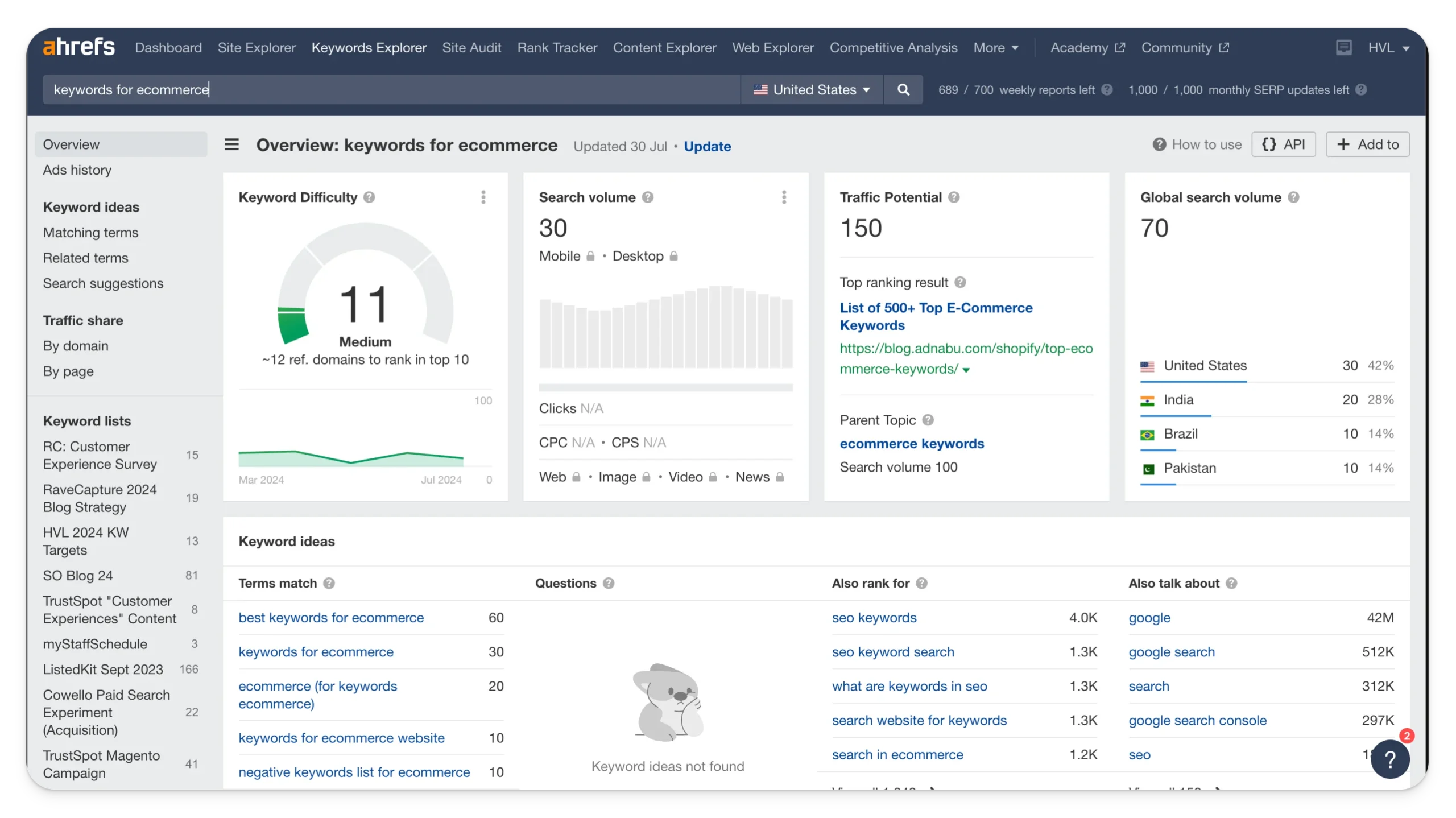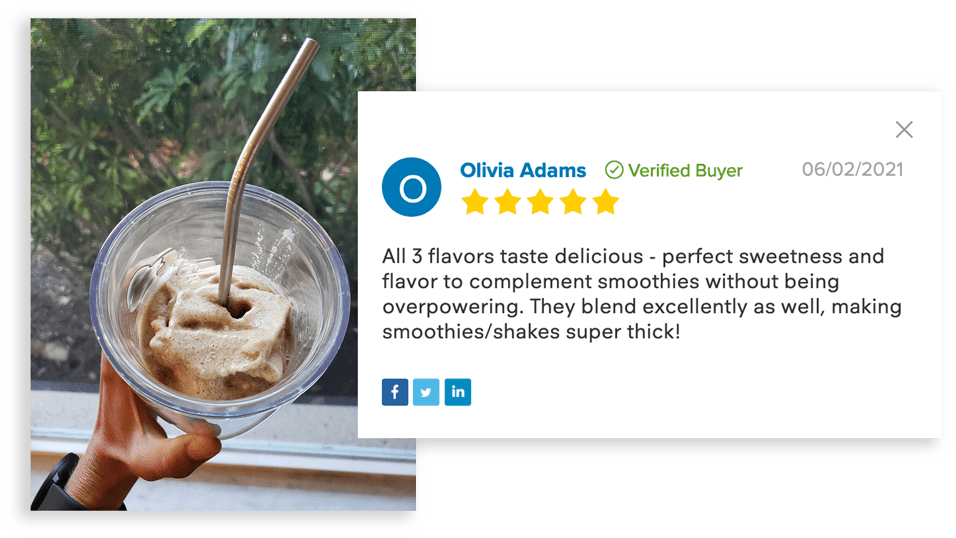Have you ever wondered why some ecommerce stores seem to attract a steady stream of buyers while others struggle for visibility? The secret often lies in the keywords they target.
Long-tail keywords can improve your online store’s presence. These phrases bring visitors and buyers with clear intent to the right pages.
In this article, we’ll explore some of the best techniques to find long-tail keywords so you can drive targeted traffic and boost your store’s visibility.
From understanding their value to implementing strategies that work, you’ll gain actionable insights in this post.
What are Long-Tail Keywords?
Long-tail SEO keywords are phrases with three or more words. They are more specific than broad keywords or head keywords. For example, instead of using a generic keyword like “shoes”, a long-tail one would be “best running shoes for women”.
These keywords have lower monthly search volume. But they have higher conversion rates. This is because they match the user intent more accurately. For example someone searching for “buy red high heels size 7” is likely to buy compared to someone just searching for “shoes.”
They play a big role in SEO. They help you target multiple search queries and capture a wider audience. By focusing on these, you can rank for keywords your competitors might miss. That’s why long-tail keywords are key to your SEO strategy.
Benefits of Long-Tail Keywords for Your E-Commerce Store
Increased Relevance and Intent
Long tail SEO keywords are specific so they are highly relevant to what your potential customers are searching for. When users type these keywords they’re often closer to a purchase decision. For example, “buy blue running shoes size 9” shows clear intent and drives more qualified traffic to your store.
Less Competition
Long-tail SEO keywords mean less competition compared to short-tail ones. This means your ecommerce business can rank higher on search engines. For example, it’s easier to rank for “affordable handmade leather wallet” than just “wallet.”
Higher Conversion Rates
In addition, they often lead to higher conversion rates. Since they’re so specific, users using them are more likely to convert. Your average conversion rate can increase greatly as these users are more ready to buy.
Niche Audiences
Long-tail keywords can help you attract niche audiences to your online store. If you sell niche products targeting specific phrases, it will connect you with customers looking for exactly what you offer and increase your online visibility.
For example, if your ecommerce store specializes in handmade, eco-friendly baby products, using long-tail keywords like “organic cotton baby blankets” or “non-toxic wooden baby toys” can help you reach parents who are specifically searching for these types of products.
Boosts Organic Traffic
Using long-tail terms boosts organic traffic by optimizing your content for searches with lower volume but higher intent. This means more customers can find your store without you having to spend on expensive ads and increase your online presence naturally.
By incorporating them in your SEO strategy, you can get these benefits and make your ecommerce store more attractive to a highly targeted audience. This will drive more qualified traffic and higher conversion rates and more traffic and more sales.
Best Strategies to Use Long-Tail Keywords for SEO
1. Identify the Right Long-Tail Keywords
To find the best long tail keywords for your ecommerce brand use targeted keyword research tools, analyze customer reviews and investigate competitors.
Keyword Research Tools
To find the most effective long-tail terms, start with keyword research tools. Google Keyword Planner is a classic. It provides search volume and competition rate for potential keywords. SEMrush and Ahrefs are also great tools. They provide additional insights like keyword difficulty score and long-tail keyword opportunities. These tools can help you find longer variations of seed keywords that are specific to your niche and have lower competition.
For instance, SEMrush’s Keyword Magic Tool can generate long tail keywords. Meanwhile, Ahrefs Free Keyword Generator can help you find less competitive keywords.
Using these tools, you can find category keywords for your products.

Customer Reviews and Feedback
Customer reviews are a goldmine for finding natural long-tail SEO terms. Users describe your products using specific phrases and terms that you might not have thought of. Tools like RaveCapture can help you collect and analyze these reviews.
Look for common phrases in customer feedback. For example, if multiple customers mention “comfortable walking shoes for travel,” that can be a target long-tail word to target. By analyzing these insights, you can find keywords straight from your customers’ vocabulary.
Competitor Analysis
Analyzing competitors’ websites is key to finding long-tail keywords. Check the keywords your competitors are ranking for using SEMrush and Ahrefs. Look at the long tail variations they are using. These keywords have lower competition than general terms.
Also, look at the content structure of competitor sites. See how they use these keywords in their product descriptions, blog posts and meta tags. This will help you know which keywords work in your industry and guide your own SEO strategy.
2. Add Long-Tail Keywords to Your Ecommerce Site
Here’s the best way to add long-tail SEO terms to different parts of your website.
- Optimize product descriptions. Long tail keywords can make your product descriptions more specific and targeted. This will help search engines rank your products higher when users search for specific queries. For example, instead of “boots”, use “leather hiking boots for men”.
- Use these keywords naturally in your descriptions. Don’t keyword stuff. For example, if you are selling guitars, describe them as “affordable electric guitars for beginners”. This will capture search traffic from users who are ready to buy.
- Use in blog posts and articles. Writing blog posts around long-tail keywords will increase visibility in search results. A post on “how to choose the best leather boots for hiking” will attract users searching for those exact terms.
- Create content that answers your customers’ questions. This will improve user experience and encourage visitors to spend more time on your site, which can also improve your search engine rankings.
- Integrate into meta tags and headers. Including long-tail keywords in your meta tags and headers will help search engines understand the content of your pages. This will improve your organic rankings. For example, use a keyword-rich title tag like “Buy Affordable Electric Guitars for Beginners – Shop Now”. Similarly, an H1 header on a product page can be “Affordable Electric Guitars for Beginners”.
- Internal links. Use long tail keywords as anchor text within your site to improve keyword rankings. Link product categories and blog posts using phrases users will search for, for example, “top rated hiking boots for women”. This will increase visibility in search engines and also improve user experience by making navigation easier.
Use these for better visibility in search engines and to boost your ecommerce SEO.
3. Use Customer Reviews to Target Long-Tail Keywords
Customer reviews are a treasure trove of long-tail keywords. These reviews will give you insights into the exact words people use when talking about your products.
Encourage detailed reviews from customers. Ask them to share their experience, what they liked and what could be improved. Asking custom review questions can help guide the content of reviews to be more specific.
For example:
- “What made you buy online?”
- “How did this product meet your expectations?”
RaveCapture is a tool for collecting detailed reviews. It asks customers to leave more feedback, making it easier to extract long-tail keywords.
When reading reviews, look for phrases related to the buying process. Phrases like “best running shoes for flat feet” or “comfortable ergonomic chair for home office” can be used to optimize your content and attract more targeted traffic.
Star ratings also give context to searches. Higher ratings often correlate with buying intent. If a 5-star review mentions “durable yoga mat,” you know it’s a term potential buyers will search for.
Example of long tail keywords from reviews:
- Product Review: “I bought this water bottle for hiking trips and it’s the best lightweight water bottle I’ve ever used.”
- Long tail keyword: “best lightweight water bottle”
By using the exact words people use in their reviews, you are more in line with what your ideal customer is searching for and will improve your SEO.

4. Create Content Around Long-Tail Keywords
To get the most out of your content strategy, try these types of content that can be optimised for long-tail keywords.
- Blog Posts: Write long-form posts around long-tail keywords. For example,long-tail keyword a post called “Best Organic Skincare Products for Acne Prone Skin” can target people searching for niche skincare solutions.
- How-To’s: Create step-by-step guides that solve a problem. For instance, “How to Choose the Right Running Shoes for Your Foot Type” can lead to your product pages.
- FAQs: Create detailed answers to frequently asked questions. An FAQ like “How to Care for Leather Shoes in Winter” can target a search query and provide value.
Formats to Try
To reach a wider audience, try different formats:
- Video Content: Create short, to-the-point videos that answer your customers’ questions. For example, a video tutorial on “How to Pack a Backpack for a Hiking Trip” can be paired with product recommendations.
- Comprehensive Content: Write long-form content that covers a topic completely, such as “A Beginner’s Guide to Setting Up a Home Gym on a Budget.” This will cater to customers looking for detailed advice.
- Relevant Content: Ensure that all content is relevant to your products and services. For example, a post on “Best Coffee Makers for Small Kitchens” should feature products from your store.
More Tips When Creating Content
- Do Keyword Research. Use SEO software to find the best long-tail keywords for your niche.
- Mix and Match Your Content. Use text, images and video in your content strategy to cater to different types of learners and get engagement.
- Regularly Update. Keep your blog and content library fresh with new content to keep your audience interested and improve your search rankings.
Creating compelling content around long-tail SEO keywords can significantly boost your search rankings and attract more customers to your ecommerce store.
5. Measure the Success of Your Keyword Strategy
Track Keyword Rankings
Use Google Analytics to track the rankings of your long-tail SEO keywords. These will show you which keywords are driving traffic and climbing in search results.
Website Traffic and Conversions
Keep an eye on your website traffic and conversions. Look at bounce rate and time on site to see if users are engaging with your content.
Adjust Based on Performance Metrics
If a keyword isn’t performing, adjust. Use Keyword Magic Tool to find better keywords. Update your long tail keywords regularly to keep your strategy fresh.
Use Tables and Lists
| Keyword: [Target Keyword] | Rank: [Current Rank] |
| Traffic: [Monthly Visits] | Conversions: [Conversion Rate] |
Incorporate PPC and Ads
Use long tail keywords in your Google Ads and other ads to capture different stages of the buyer’s journey. This will improve conversions.
Check Content Rank and External Backlinks
See where your content ranks for long-tail keywords. Good link-building and a strong backlink profile will improve your domain authority and make it easier to rank for new keywords.
Use PageSpeed Insights
Make sure your pages are fast. Google’s PageSpeed Insights will show you where to improve. A fast page will reduce bounce rate and improve user experience.
Long-tail keywords are key to your ecommerce site’s SEO. By targeting these specific terms, you will attract targeted traffic and higher conversions.
With long-tail keywords, you can:
- Rank higher in search results.
- Target a niche audience looking for very specific products.
- Have less competition so you can stand out.
Consider using RaveCapture to get detailed reviews. This will not only boost your credibility but also add valuable content to your site that will capture more long-tail searches.
By doing this, you’ll see results.
